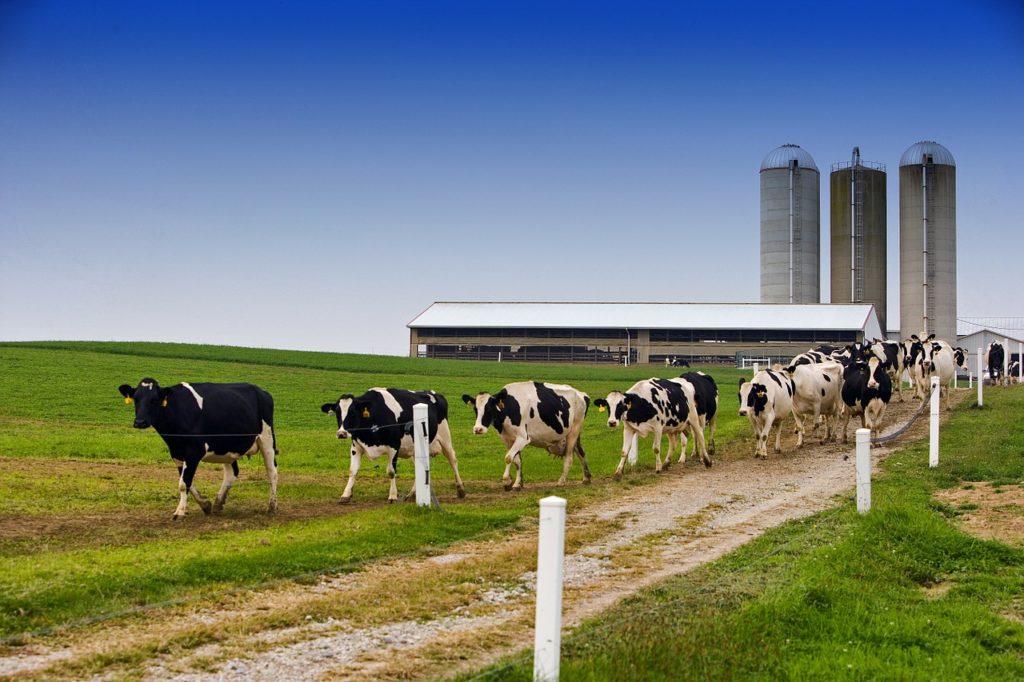Ireland’s famous green pastures and cool climate are a perfect environment for grazing dairy cattle — but not this year.
The sweltering summer turned lush fields brown and led to shortages of fodder for the country’s millions of cows. Months of drought and heat have also caused problems across the European Union, the top milk exporter. Farmers from Ireland to Germany have had to cull herds or stop milking months early.
For the EU’s $12 billion dairy industry, parched fields have raised animal-feed costs, squeezing farmers’ profits. Ireland’s Agriculture and Food Development Authority expects dairy farms to earn half as much as last year. The feed situation could become critical and milk production may drop in the coming months, according to Arla Foods, the Nordic region’s biggest dairy company.
“In July, we brought in grass that should have been for winter feeding,” said Pat McCormack, who has 100 dairy cows in Ireland’s County Tipperary, where he’s worked for 21 years. “For a farmer with no grass, no silage, no money and kids going to college, it’s a big mental challenge.”
Culling Irish Cattle – Number of cows culled each week since June is up from a year earlier.
Source: Department of Agriculture, Food and the Marine
Things have become so bad that cooperative Arla on Thursday said it plans to take the unprecedented step of paying its entire profit to farmers as they face pressure from the drought. The EU has also moved to help farmers battling fodder shortages, such as accelerating payments or easing land rules.
In Ireland, snow at the start of the year soaked fields so much that farmers began dipping into fodder reserves before the drought then hurt grass growth, causing them to use up next winter’s supplies this summer. Some have had to buy feed at extra cost with no crops of their own left to feed cattle.
Those who couldn’t afford to do that have culled herds. Since June, about 16 percent more cows than last year have been slaughtered weekly, according to Ireland’s agriculture department. In Germany, culling is up as much as 50 percent from a year earlier, farmer’s group DBV estimates.
While milk output isn’t directly proportional to herd size and it’s still too early to reliably assess the impact on production, the DBV says milk deliveries in eastern Germany may drop 10 percent from a year earlier. One Irish farmer estimated that daily losses total about 10 euros ($11.70) per cow.
The heat has also directly affected cattle. While a cow produces about 40 liters of milk a day, hot weather can cause output to halve and take time to recover, said Peter Paul Coppes, a senior dairy analyst at Rabobank International in Utrecht, Netherlands. Farmers have to pay extra for more nutritious feeds if they want to boost productivity.
The additional costs and reduced output come as EU milk prices are down about 4 percent from a year ago, further squeezing farmers. In Denmark, which accounts for about 8 percent of EU dairy sales, the heatwave’s impact on dairy could hurt the country’s agriculture sector by as much as $1 billion this year and raise milk prices in the next six months, Danish agricultural group SEGES said.
Milking It – Key countries in Europe’s dairy industry.
Source: Rabobank and EuroMonitor 2017
The dairy industry could face further problems even with more favorable weather, because the heat can impact bovine fertility, the scale of which won’t be clear for nine months, said Chris Gooderham, a dairy analyst at the U.K.’s Agriculture and Horticulture Development Board.
“This is all going to lead to a financial crisis in the Irish dairy sector unless we see significant upward momentum in the product price,” said John Robinson, a dairy farmer with 130 cows in County Kilkenny in Ireland’s southeast. “Christmas could be fairly bleak.”
Article sourced from https://edairynews.com



